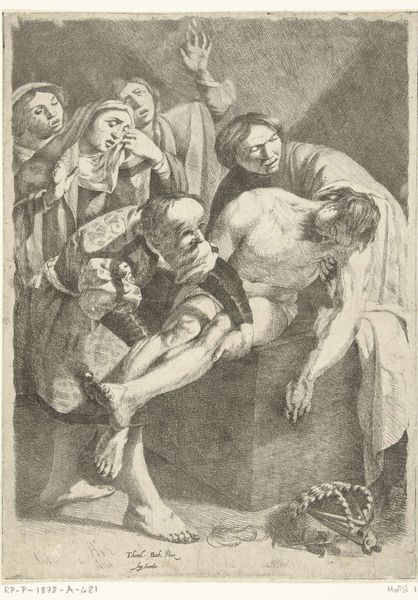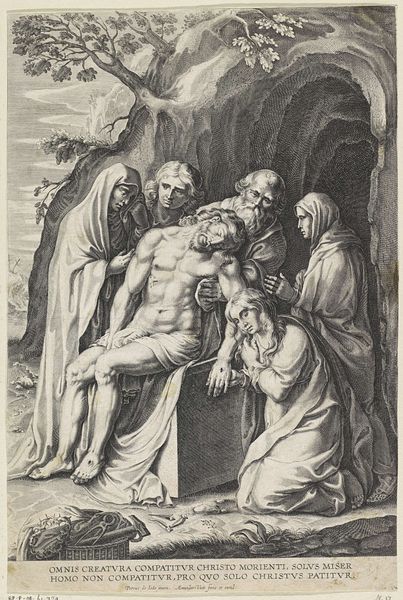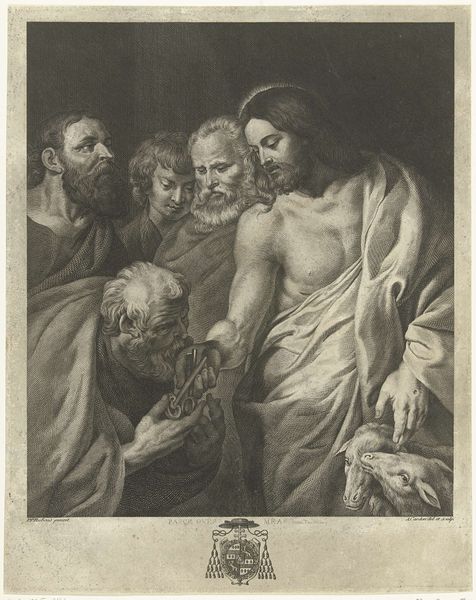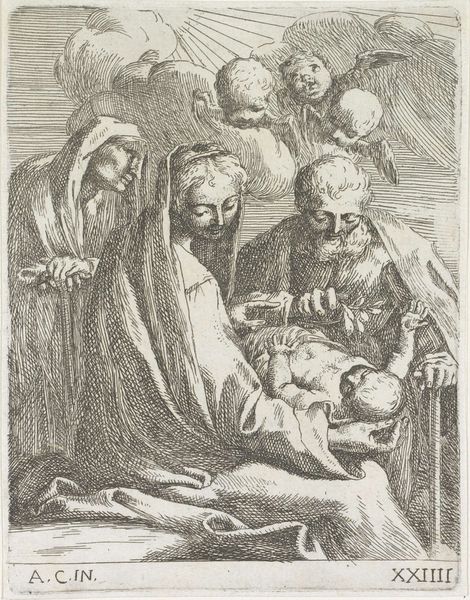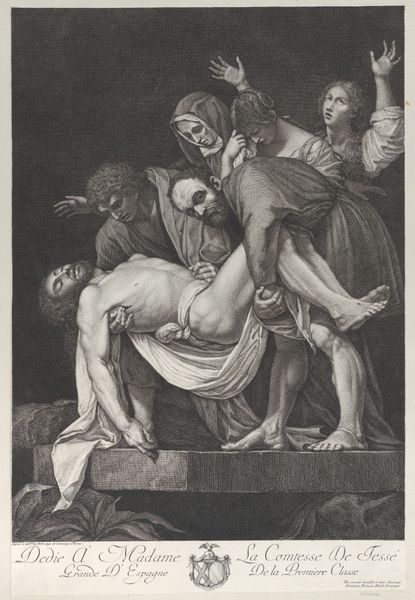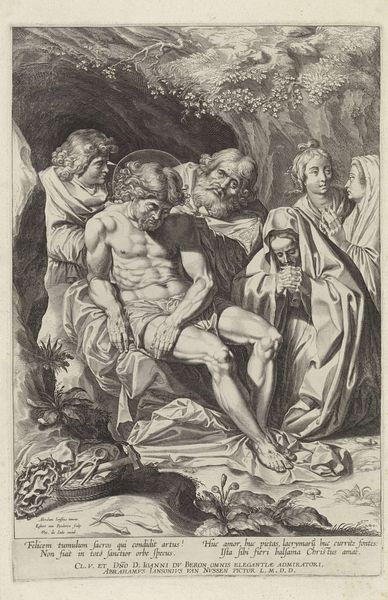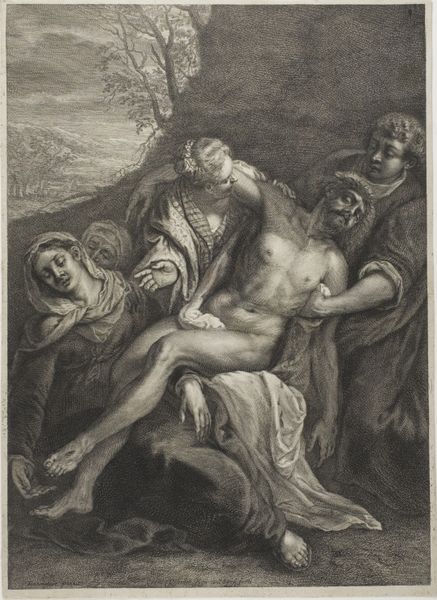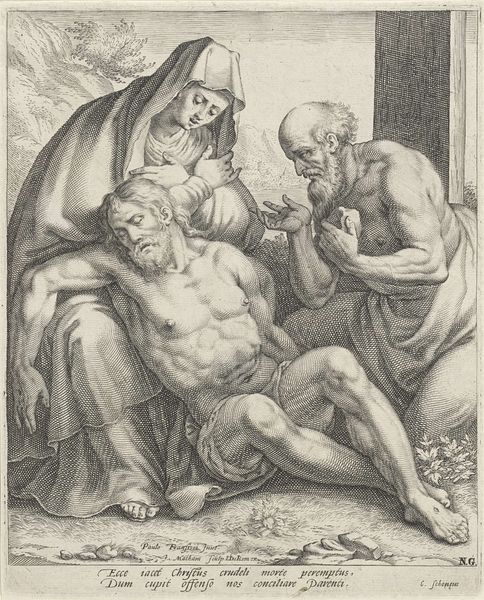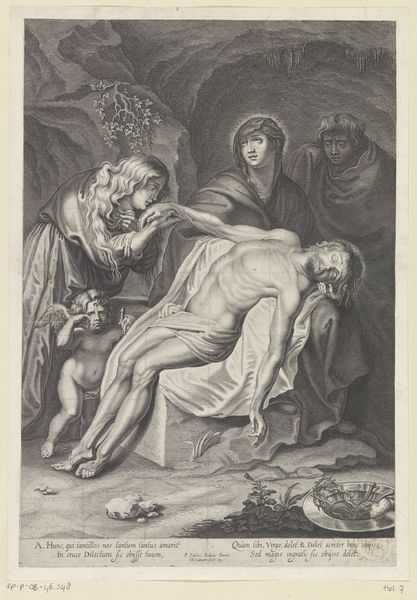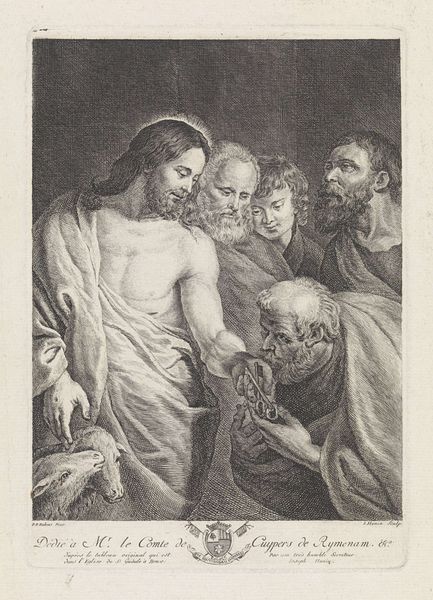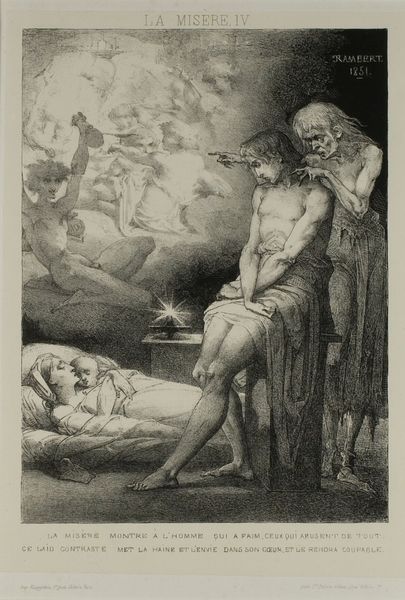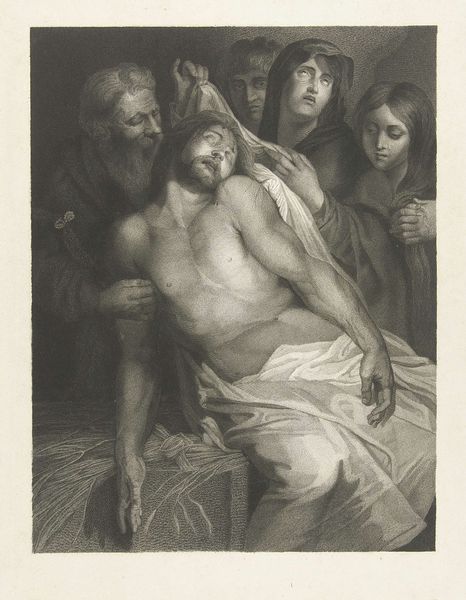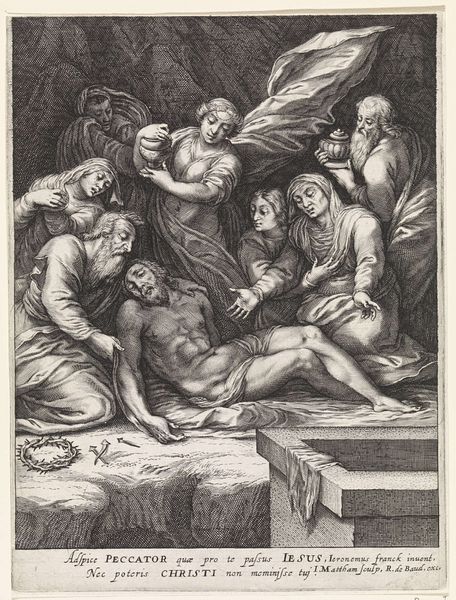
print, engraving
#
portrait
#
baroque
# print
#
figuration
#
history-painting
#
nude
#
engraving
Dimensions: height 277 mm, width 198 mm
Copyright: Rijks Museum: Open Domain
Editor: This is Nicolaes Ryckmans’s Pièta, an engraving from sometime between 1616 and 1636. The grief is palpable; the faces are so expressive. What symbolic readings do you glean from it? Curator: Note the dramatic use of light and shadow—typical of the Baroque—that intensifies the emotional impact. Consider how the body of Christ, centrally placed, functions as a potent symbol of sacrifice and redemption. It reflects cultural memory and spiritual values embedded within the image, drawing from centuries of religious iconography. What enduring stories does it evoke for you? Editor: The drapery, the way it shrouds and reveals, feels significant. It reminds me of theatrical staging, and that exaggerated emotion is a characteristic of baroque. Curator: Indeed. Think of the veil also as a reference to sacred objects. These cloths had special, apotropaic qualities. The veil operates almost as a bridge connecting earthly suffering with divine presence, reinforcing beliefs of miraculous power. It speaks to humanity's relationship with mortality and immortality. Editor: So, it is more than just a baroque aesthetic. The very act of displaying the shroud invites reflection on history, devotion, and belief. Is the viewer participating? Curator: Precisely. The artist invites you into a dialogue about faith, loss, and the enduring power of visual symbols in shaping our understanding of the human experience. It is all an attempt to console our grief and questioning around mortality. Editor: I appreciate understanding it not just as a historical artwork, but an object meant to tap into those deeper human feelings. Curator: Absolutely. Through its powerful imagery and enduring themes, it resonates across time, reminding us of the shared human experiences of suffering, compassion, and hope.
Comments
No comments
Be the first to comment and join the conversation on the ultimate creative platform.
